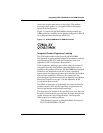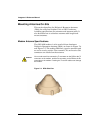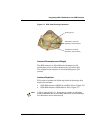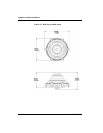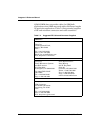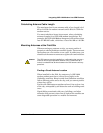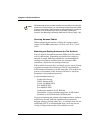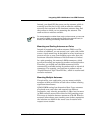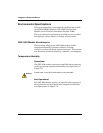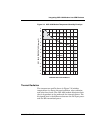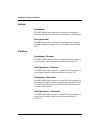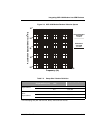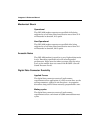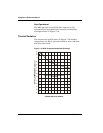
Integrating GSP-1620 Modems into OEM Products
80-99208-1 Rev. D 7-29
Instead, you should fill the groove on the antenna, which is
normally used for the O-ring, with an adhesive caulking
material that can bond to the aluminum antenna base and
the surface to which you are mounting the antenna. The
caulk seals out moisture and dirt.
Tip
For extra protection on either flat or rough surface mounts, you can coat
the antenna’s SMA connectors before sealing the antenna base; for
details, see Mounting and Sealing Antennas on Poles.
Mounting and Sealing Antennas on Poles
Instead of mounting the modem antenna (DRA) on a flat
surface or bulkhead, you can mount it on a pole with six M4
screws. A pole mount may be desirable in snowy locations, to
prevent wet ice or snow from building up to more than the
maximum allowable thickness of 20 centimeters (8 inches).
In a pole mounting, the antenna’s SMA connectors, which
are not self-sealing, are exposed to weather and precipitation.
Therefore, you should seal the SMA connectors with a
commercially available coating for outdoor cable or electrical
connectors. For example, you could use a product such as
“Liquid Electrical Tape” from PDI Inc., which is weather and
corrosion resistant.
Mounting Multiple Antennas
If required for your application, you can mount multiple
antennas within several feet of each other without creating
significant interference.
QUALCOMM testing has determined that if two antennas
are placed near each other and transmit on different
frequencies, only a barely perceptible (1 dB or less) increase
in 1605 emission occurs when tested at full jamming power.
This maps to isolation between antennas of 20 dB. Even for
antennas whose bases were touching (zero inches separation)
the isolation was 22 dB in the worst case of rotation with
respect to one another.



